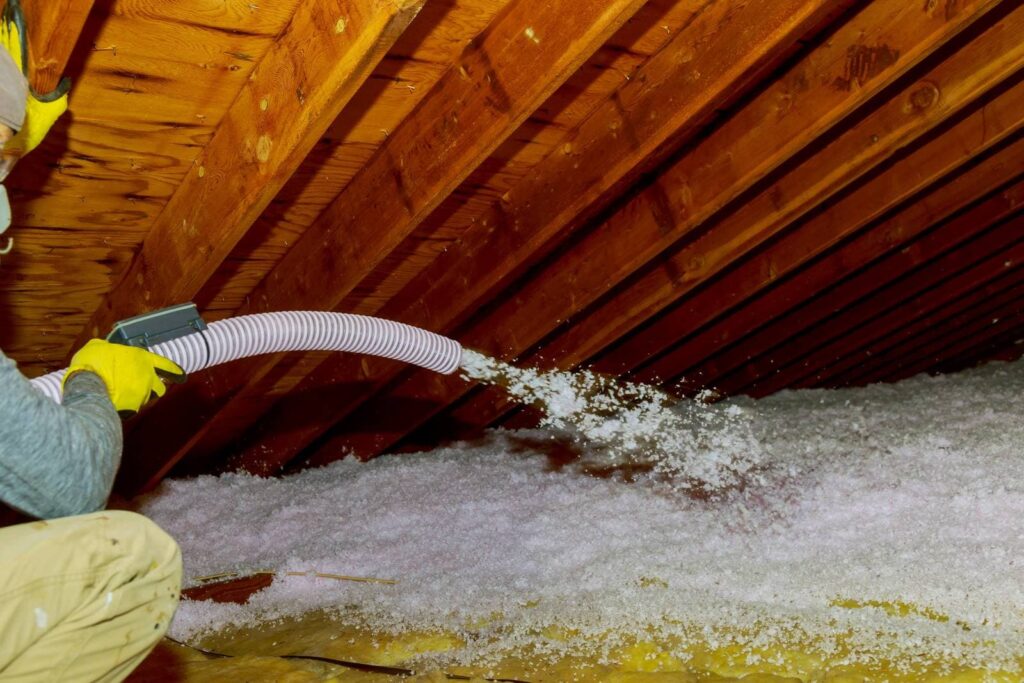7 Advantages of Spray Foam Insulation in Your Attic
All types of attic or crawl space insulation play a critical role in creating a more comfortable interior for a home or business. Property owners have many choices when it comes to insulating an attic. One type of insulation that has benefited from advances in technology over the last few decades is spray foam. Here are seven reasons we think it’s an excellent choice for insulating your attic.
Different Types of Spray Foam Insulation
There are two types of spray foam insulation available; open-cell spray foam insulation and closed-cell spray foam insulation. The difference lies in the bubbles, or cells, that make up the foam.
The cells in open-cell insulation are deliberately left open, which creates a foam that is soft, spongy, and flexible. Closed-cell insulation will have a lower R-value than closed-cell ranging from around 3.5 to 6.0 per inch.
Closed-cell bubbles are enclosed, with the cells pressed together to prevent air and moisture from getting inside the insulation. This structure makes closed-cell foam insulation more rigid, and denser. Closed cell insulation is more costly than other types. However, the extra expense gives you a durable insulation type with an R-value as high as 7.0 per inch.
Installing Spray Foam Insulation
Spray foam insulation is applied by using a spray foam gun that mixes two chemicals together, isocyanate and polyol resin. The chemicals are stored in different drums and mixed during application by combining the streams from a double-nozzled sprayer.
When the two products meet, they create a foam that can expand 30 to 60 times its liquid volume. Expansion and hardening occur quickly once the chemical reaction occurs.
Spray Foam Insulation Advantages
Spray foam insulation is a fantastic option for new and older homes. It outperforms most other types of insulation, like fiberglass, and can reduce your energy bills. Here are a few more exciting qualities of spray foam insulation.
1. Cooling and Heating Advantages
Insulation is all about reducing temperature fluctuations in the interior of a building. Most types of insulation can’t match the insulating properties of spray foam because they can’t create an airtight seal that protects property from outside temperature fluctuations.
Foam insulation perfectly seals gaps between walls, floors, ceilings, electrical outlets, light fixtures, and joins between windows, walls, and doors. Energy leakage through these areas can account for more than 30% of a property’s energy expenses.
Spraying the foam evenly over a surface means it gets into every nook and cranny. It then expands and dries to create a significant barrier to airflow and heat transfer.
Foam insulation is an eco-friendly option because it lasts a long time. It costs a little more than other types of insulation, but the money you can save on heating and cooling bills is worth the tradeoff.
2. It Maintains Its R-value Over Time and Lasts Longer
Once installed, spray foam insulation is incredibly durable. Unlike other types of insulation, it will maintain its R-value year-after-year and last longer, saving you more money.
Insulation types like cellulose and fiberglass compact over time, which reduces how well they work. When this happens, your options for restoring your insulation are to replace it with new or add another layer on top.
3. It Prevents Rodent Infestation
Small cracks and holes in your building are where rodents and other pests enter your property. It can be challenging to lock these down when using other insulation formats. Insulation batts also provide nesting and burrowing material for rats and mice that love to hide away in your attic.
When your team for rodent control in San Jose, CA, has gotten rid of the pests infesting your attic, you don’t want them to return. Foam spray insulation is an excellent complement to rodent control because it is hostile to most pests and furry critters.
Pests won’t have easy access to your home when every little crack and crevice is filled with hard foam insulation. Nor will they have access to nesting material that they can contaminate with their waste.
4. It creates a Moisture Barrier
Spray foam insulation helps because it resists moisture. Open and closed cell foam insulation resist moisture, but closed cell insulation is the superior option. Water is unable to penetrate because of cell encapsulation.
5. Mold Resistant
Moisture is always a risk in the attic when small cracks and holes in the roofing material go unnoticed. Mold outbreaks are a health hazard that can cause illness for sensitive people living or working at the property.
Fiberglass and cellulose insulation can absorb and hold moisture that can lead to a mold outbreak. Pests are also attracted to dampness in an attic. Foam insulation stops these problems from occurring because it dries quickly.
6. Prevent Pollen and Allergens from Getting Into Your Home
The ability of spray foam insulation to completely fill gaps and crevices in your crawl space or attic makes it an excellent option for people with allergies. Allergens like pollen enter through attic vents, but the cell foam insulation prevents them from going any further.
7. Improve The Attic Ductwork
Attic ductwork is often not insulated, which makes it less efficient because of heat transfer from the warm interior. It’s possible to wrap ductwork with insulation batts, but you may still have leaks that the batts can’t seal.
Spray foam insulation coats the ductwork with a layer impervious to air and moisture. HVAC units can work more efficiently at keeping your interior comfortable, meaning you will save money on energy bills.
Are you looking for insulation for your property that won’t attract pests, lasts a long time, and will save you money? Consider calling Attics Pro for an estimate. Spray foam insulation creates a more comfortable environment in your home or business, helps with rodent control, and prevents allergens from affecting your family, customers, and employees. Call today to find out more.

